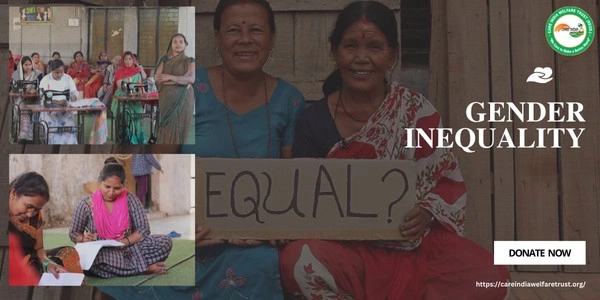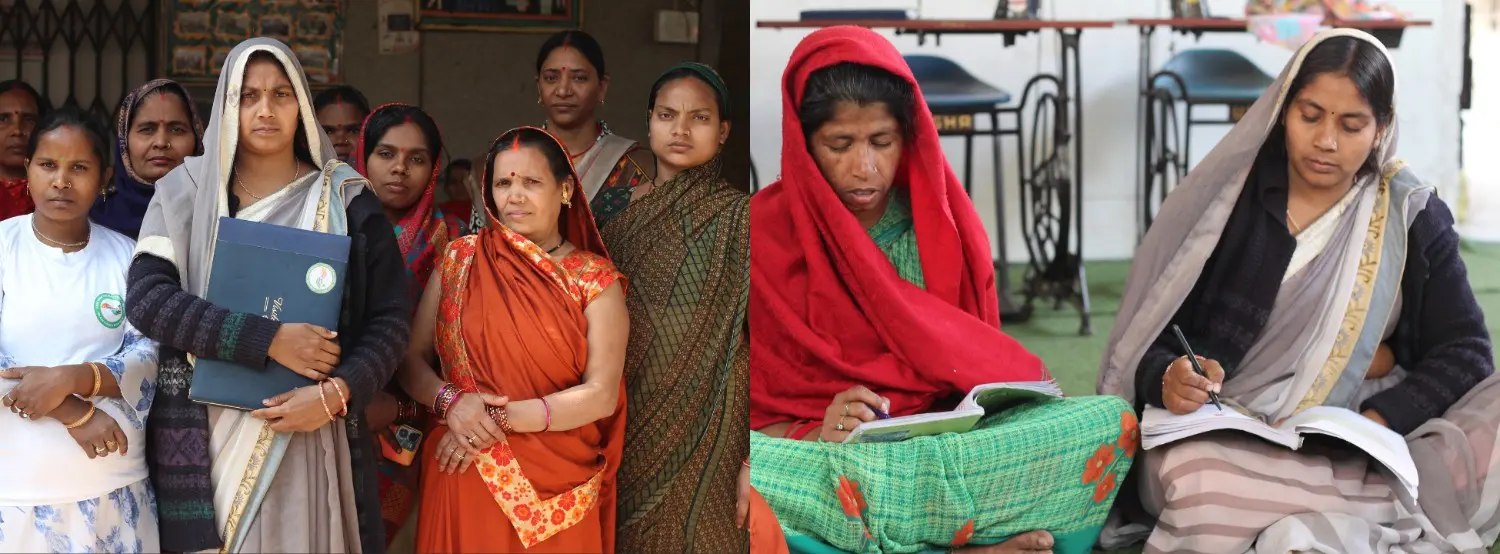Gender inequality has been a big social issue in India for centuries. The child sex ratio among children of 0-6 years is 918 girls for every 1000 boys in the 2011 census. Gender inequality is an issue that can affect people around the globe, and there are millions of disadvantages for women in their lives. In this blog, you can talk about the causes and effects of gender inequality, research the gender discrimination, its causes, and its effects.
Gender Inequality
Gender Inequality (लैंगिक असमानता के कारण) is seen as the inequality in the perception or treatment between genders. Examples of the main causes of gender inequality (असमानता के कारण ) include unequal pay, lack of educational opportunities for girls, and gender-based violence. When everybody can be tormented cause of gender discrimination, women are subjected to the maximum times of unfairness due to the causes of inequalities.
Types of Gender Inequality
Gender inequality appears in many forms and affects individuals differently depending on their environment, culture, and opportunities. It refers to the unequal treatment or perception of individuals based on their gender. These inequalities limit access to education, employment, healthcare, and leadership roles, especially for women and girls. Understanding the types of causes of gender inequality in education is essential to addressing and reducing these gaps in society. Below are some common forms:
- Educational Inequality: Limited access to education for girls in many regions.
- Economic Inequality: Unequal pay, fewer job opportunities, and financial dependence.
- Political Inequality: Underrepresentation of women in politics and decision-making roles.
- Health Inequality: Gender bias in healthcare access and research.
- Social Inequality: Gender-based violence, stereotypes, and restrictions on personal freedom.
The 10 Causes Of Gender Inequality
To stop the causes of gender inequality in India (भारत में लैंगिक असमानता के कारण), we have to first look at its root causes. These are deeply embedded in cultural, social, and economic systems, making it important to address them at every level. One key aspect is understanding the main reasons for the gender pay gap, as wage differences between men and women are a direct result of systemic discrimination. Here are the 10 effects of gender inequality:
1. Cultural Norms:- Standard gender roles limit possibilities for ladies and non-binary people.
2. Education Boundaries: Restrained right of entry to Education for girls, mainly in developing nations, perpetuating inequality.
3. Economic Disparities: Women frequently face wage gaps and fewer career opportunities in comparison to men.
4. Gender-based Violence: Violence against females restricts their freedom and prevents them entry to opportunities.
5. Loss of felony Rights: In many areas, women lack the same legal rights, affecting ownership, inheritance, and employment.
6. TypeCast: Gender overwork prevents personal and expert growth for all genders.
7. Unequal Healthcare gets the right of entry: Women and marginalized genders face obstacles in gaining access to sufficient healthcare.
8. Political Underrepresentation:- Low female participation in politics leads to rules that don’t deal with understanding gender inequality causes.
9. In confined leadership possibilities:- women and non-binary people are underrepresented in management roles across sectors.
10. Media illustration: Stereotypical portrayals in media enhance root causes of gender inequality biases, and inequalities.
Gender Inequality In India
In India, the causes of gender inequality in the workplace are deeply ingrained in the country's social fabric. Gender discrimination causes like patriarchy, societal bias, and old traditions keep promoting inequality. The causes and consequences of gender inequality include fewer job opportunities for women, unequal pay, and limited chances for growth and leadership.
1. Traditional Standards and Practices: In lots of elements of India, ladies are thought much less precious than boys, leading to a preference for male toddlers. This results in confined entry to assets, training, and healthcare for girls, supporting the gender gap.
2. Early Marriage: Early marriage remains a big difficulty in India, with tens of millions of women married off before they reach maturity. This denies them the danger of completing their education and frames their ability to make just options.
3. Lack of economic independence: Ladies in rural India often have limited access to economic resources, assets, and decision-making power. This loss of monetary independence continues to leave women dependent on male family members and reinforces social causes of gender inequality. Economic dependence is one of the many types of inequality that women face, especially in underdeveloped areas.

Advantages of Gender Inequality (perceived in some societies)
- Maintains traditional family roles, with men earning and women managing homes.
- Allows men more authority in decision-making.
- Reduces competition for men in jobs and leadership.
- Encourages cultural practices that value men more.
- Provides social security to men by prioritizing their opportunities.
Disadvantages of Gender Inequality
- Women face limited access to education and career growth.
- Unequal pay and discrimination increase poverty among women.
- Early marriages and health risks harm women’s well-being.
- Society loses talent when women are excluded from opportunities.
- Gender inequality slows overall economic and social development.
How We Can Stop Gender Inequality
1. Legal safety
Enforce the causes of gender discrimination in india laws and ensure equal pay for the same work.
2. Education for All
Provides the same access to education for all genders, selling gender-neutral curricula.
3. Financial Empowerment
Helps to promote Women's Empowerment inside the group of workers and encourages women's entrepreneurship.
4. Shared Responsibilities
Promote shared family duties and provide paternity leave.
5. Quit Gender-based Violence
Toughen laws in opposition to gender-based violence and aid victims.
6. Management Representation
Growth of ladies and marginalized genders in management roles.
7. Cultural Change
projects stereotypes and promotes wonderful media portrayals.
8. Global and Community Activity
Collaborate globally and assist grassroots movements for lasting exchange.
Do NGOs Support Gender Equality
If I talk about the topic, do NGOs support gender equality? There are many NGO that supports gender equality. The role of the NGO is playing a key function in addressing the causes and effects of gender inequality in India. NGO works tirelessly to empower ladies and girls, giving them the tools and support they need to conquer those challenges. Our NGO Care India Welfare Trust is one of them, This is the Best NGO in Delhi. Apart from Delhi, Care India Welfare Trust also serves different states such as Kolkata, Bengaluru, Hyderabad, Jharkhand, Tamil Nadu, and Andhra Pradesh.
Under such initiatives, the trust gives out free education to children from lower castes and marginalized communities, provides healthcare services for the same communities, skill development programs for women, and emergency help in times of natural disasters to create a better and more equitable society for all through these initiatives. They also provide skills to women and girls to make them independent, and they also make them aware of their rights. Here are some highlights of the causes of gender bias and what they do for girls and women.
1. Training and ability development: The Organisation focuses on improving entry to training for girls in rural and marginalized groups. They provide scholarships, mentorship, and vocational schooling, making sure that females have the opportunity to pursue their desires and careers.
2. Financial Empowerment: Our NGO Care India Welfare Trust supports women by offering schooling in financial literacy, entrepreneurship, and activity competencies. This allows ladies to become financially independent, breaking the cycle of dependency and poverty that regularly accompanies causes for gender discrimination.
3. health and well-being: By offering get right of entry to causes of gender equality, healthcare, sanitation, and vitamins, Care India Welfare Trust ensures that females’ health needs are prioritized.
4. Advocacy for Policy Change: Care India Welfare Trust works to address factors contributing to gender inequality to influence rules that assist gender equality. By advocating for legal guidelines that defend women’s rights, they are supporting the creation of a better supportive criminal framework for women and girls.
FAQ
What causes Gender Inequality in Society?
Gender inequality in society happens because of traditions, lack of education, and unfair laws. In India, gender equality is improving, but the causes and effects of inequality still exist.
What are the main factors responsible for gender inequality in India?
The factors of gender inequality in India are caused by patriarchy, loss of training, discrimination, stereotypes, child marriage, dowry, unemployment, and unequal opportunities.
What is gender inequality, and what are the reasons for gender discrimination in society?
Unequal treatment or opportunities based on gender in social systems. Gender discrimination takes place owing to stereotypes, traditions, patriarchy, loss of schooling, unequal pay, social norms, and constrained opportunities for girls.
What are the reasons for gender inequality in India?
Gender inequality in India is brought on by patriarchy, discrimination, loss of training, dowry, child marriage, stereotypes, and unequal opportunities.
How To Understand Women's Psychology Towards Independence?
To understand women's psychology towards independence, notice how they value freedom, decision-making, education, equal opportunities, and respect in society.
Which of The Following is a Major Cause Of Gender Inequality In India?
A major cause of gender inequality in India is the deep-rooted social and cultural beliefs that consider men more important than women, leading to unequal treatment in education, jobs, and rights.
What are the Effects of Gender Inequality in Society?
Gender inequality in society leads to fewer job opportunities, lower pay, poor education for girls, and limited rights for women. The causes of gender inequalities are deep-rooted in traditions and unfair systems. These causes of gender inequalities affect health, safety, and freedom, making life harder for women and girls.
What is the impact of gender Inequality?
Gender inequality restricts opportunity, lowers income, heightens poverty, causes health problems, fuels discrimination, hinders economic progress, impacts social development, and creates unjust barriers for both women and men.
Gender inequality examples?
Gender inequality examples include unequal pay, limited education for girls, early marriages, workplace discrimination, fewer leadership roles for women, restricted healthcare access, and cultural norms that favor men over women in daily life.

